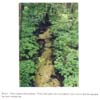Watershed Vegetation and the Distribution of Aquatic Insects





A dissertation submitted in partial fulfillment
of the requirement for the degree of
Doctor of Philosophy
Environmental Health Sciences
in the University of Michigan
2001
by
Hannah-María Katie-Eliza Jacques
Co-Chairmen: Peter G. Meier, Michael J. Wiley
ABSTRACT
Deciduous forest streams (DFS) and coniferous forest streams (CFS) within the same Charlevoix County, Michigan, USA, spring-fed watershed were sampled for mayflies (Ephemeroptera), stoneflies (Plecoptera) and caddisflies (Trichoptera). Monthly kick net and seasonal drift net samples were collected for one year. Sand/organic and gravel substrates were both sampled in DFS. Sand/organic substrate was sampled as the preponderant substrate in CFS.
Two second-order streams were sampled in each forest type, and all streams were matched as closely as possible with regard to physico-chemical factors and stream habitat parameters. Gradients of the middle reaches of the four streams, including sampling sites, were comparable. The water temperature range was greater in DFS than in CFS although both ranges fell within the wider range of other northern Michigan trout streams.
Five species of mayflies, 10 species of stoneflies, and 19 species of caddisflies were collected. Twenty-five species were found in both stream types. A taeniopterygid broadback, Taeniopteryx sp (Plecoptera), was collected only from CFS. Also found only in CFS were 5 caddisfly larvae: Hesperophylax designatus (Limnephilidae), Hydroptila sp. (Hydroptilidae), Limnephilus indivisus (Limnephilidae), Onocosmoecus unicolor (Limnephilidae), and Rhyacophila acropedes (Rhyacophilidae).
There was less but substantial similarity between the entomofauna of DFS (Sørensen similarity coefficient (SC) .78) than between CFS (SC .91), and there was a high level of similarity between both stream types (SC .85).
Dominant trees of the deciduous forest were sugar maple (Acer saccharum), elm (Ulmus sp.) and basswood (Tilia americana). In the coniferous forest, white cedar (Thuja occidentalis) and eastern hemlock (Tsuga canadensis) predominated.
At all four study sites, streamside arboreal vegetation did not significantly vary from watershed forest cover randomly sampled within 100 meters of each stream.
The central finding of this research is that watershed vegetation, in this case, a coniferous forest, was correlated with the distribution in low-order streams of 6 species of aquatic insects. This finding is placed in ecologic relief because 25 of the 34 organisms collected occurred at all four study sites.




